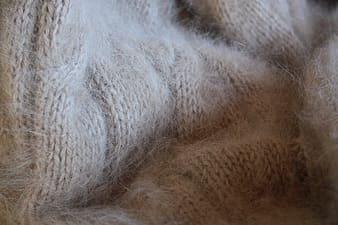
Reed McLaren has spent time researching how to make timeless clothing pieces last. Initially helpful in the curation of her exquisite natural material vintage collection, The House of Ama, she now focuses her efforts on exploring this subject matter to help others. McLaren shared some of her knowledge at the Rhode Island School of Design (RISD) Museum as a presenter in The Lost Art of Garment Grooming and Mending in the Modern Age. The presentation reviewed some of the ways the lifespan of garments could be extended through the use of care and tools. She was gracious enough to let Motif in on some of these secrets.
McLaren says some of the keys to maintaining clothing are how and how often they are cleaned. Below are a list of items and tips that can help ensure clothes stay looking fresh:
Garment brushes. According to McLaren, garment brushing was once considered an essential practice and is still an excellent way to keep our clothes, especially coats, suits and blazers, in great shape. Clothing is not only exposed to the dust and debris from the outside environment, but the oils from our own skin can damage fibers over time. Brushing against the nap of the garment removes debris and oils, while brushing down restores the nap and appearance of the garment. The best garment brushes contain natural hair, but a velvet-faced lint brush also works wonders.
A sweater comb. Sweaters and knits are naturally prone to pilling, especially in areas that are exposed to friction during wear, and need a little help to stay looking new. A sweater comb, which has a fine mesh screen, can be used to remove pills and reveal a rejuvenated layer, and is most useful for resilient natural fibers such as wool and cashmere.
Invest in a garment bag. A mesh washing bag can help protect garments from agitation that can occur during the wash cycle of a machine. To save money, a white pillowcase tied at the opening is sufficient in doing the trick and allows a variety of items to be washed in the machine. If one has the time, handwashing in a no-rinse formula such as Eucalan or Soak can be a great way to safely clean your favorite pieces and minimize water usage.
Avoid the dryer. The dryer, especially at high heats, can shrink clothing and cause damage that can shorten the life of a garment, particularly true for active wear, leggings and jeans that contain spandex. Air drying on a rack is good practice for the pieces you care about, and airing out, in general, can help reduce the need for washing by freshening garments in-between wears.
When shopping for garments, McLaren says that selecting pieces made from resilient natural fibers, such as linen, higher quality cotton and fine woolens, are a solid choice. She also searches for signs of well-made construction, such as sturdier seams and thicker material used for wovens and knits. There are other benefits to taking care when selecting, such as having positive effects on the environment and your wallet, McLaren says.
Cost. With the ready availability of cheap clothing, many people have concerns about spending a higher sum for one or two quality items. For most, it is more practical to spend smaller amounts of money on a higher quantity of clothing in order to get more bang for your buck. But are they? The cost-return on this reasoning does not quite add up. Clothing that is cheaply made will deteriorate much faster than quality made items, which can cause consumers to spend more on clothing in the long run. This is not saying you shouldn’t negotiate or look for deals. Thrift stores can be helpful in this area and often carry garments made from a previous era which can be of higher quality.
Environmental impact. Consumer choices and habits can have a huge impact on the environment when it comes to clothing. While a significant amount of energy is used in the manufacturing process and beyond our control, it can be surprising to learn that an equal amount of energy can be consumed by the washer and dryer during the “use phase” of a garment. Washing less not only reduces energy use but helps us hang on to our clothes longer, which means less is going to the dump. According to the US EPA specific-data, there were 33.8 billion pounds of textiles discarded as municipal solid waste in 2017, of which 22.4 billion pounds went to landfills. Hopefully, with smarter shopping and care, this can be fixed.
One of the final benefits is that with lasting garments comes a story. The longer we help them last, the more history a sweater or blouse can carry. As we develop a deeper relationship, the idea of simply discarding these items is no longer an appealing option. With this in mind, there are many positive reasons to choose sustainability. If one doesn’t have the budget to completely transform their wardrobe, try adding one piece of clothing at a time and start exploring intelligent methods of care to see what works for you. In the meantime, the environment, your wallet and the world is looking forward to your next outfit.
To learn more about the care and keeping of clothing visit @thehouseofama


